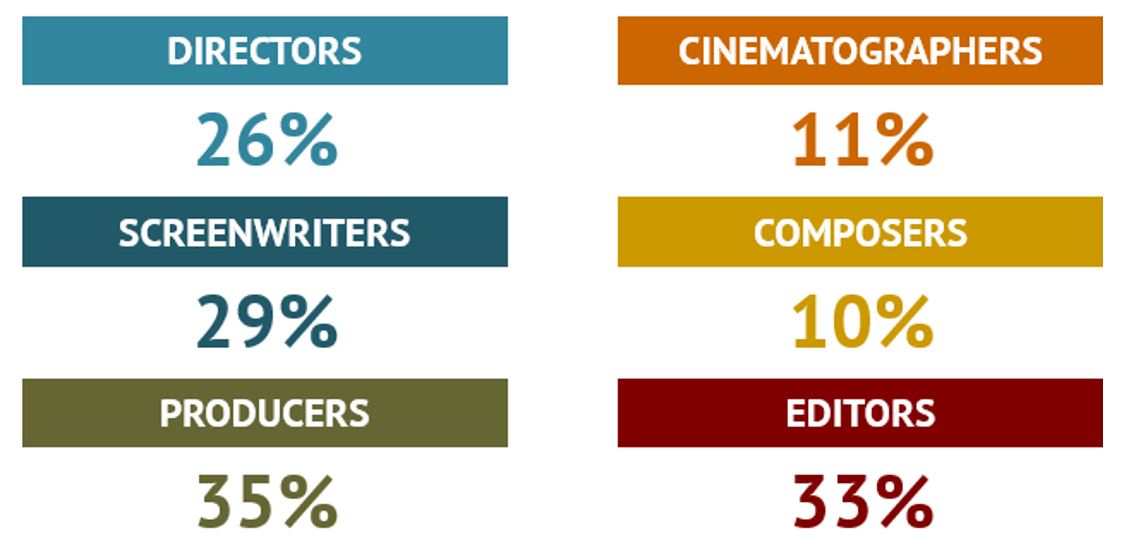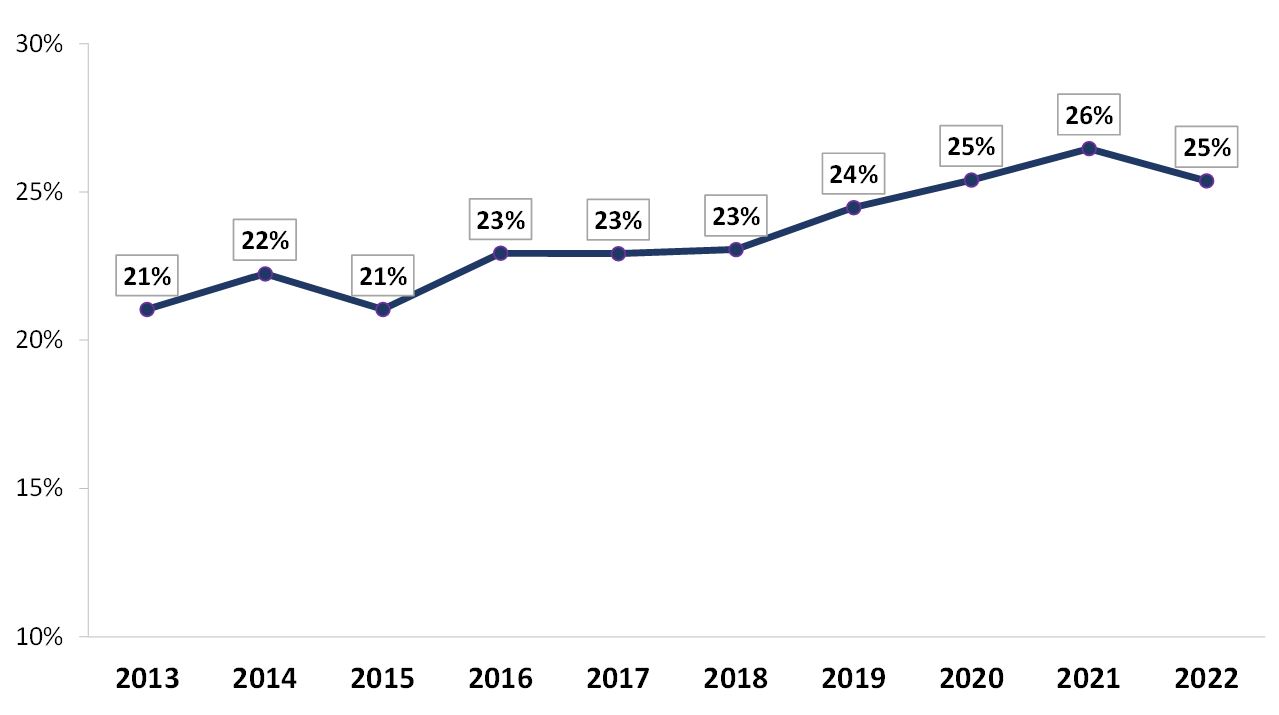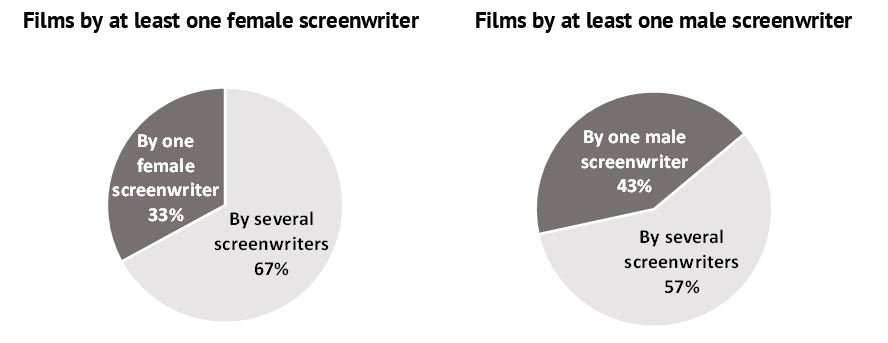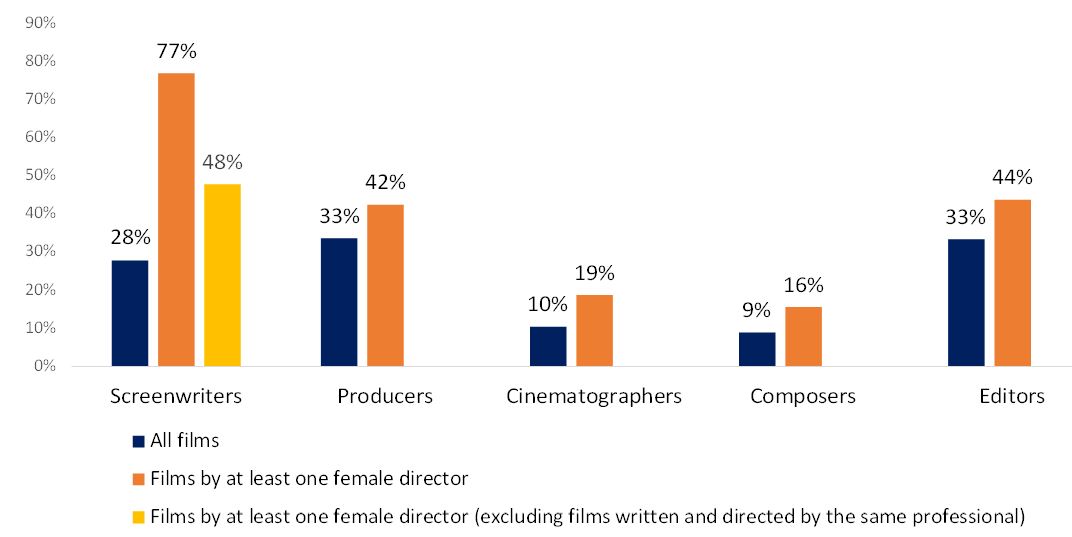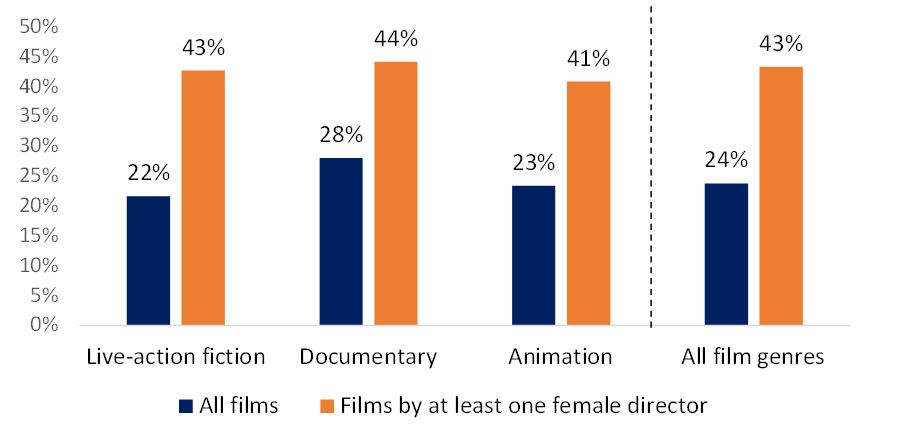Download "Female professionals in European film production – 2023 edition" here
This report – Female professionals in European film production – 2023 edition - provides an overview of the gender disparity among film professionals working in the European film industry. Our analysis includes professionals who have worked on at least one European feature film in one of the following key roles:
- Director
- Screenwriter
- Producer
- Cinematographer
- Composer
- Editor
- Actor/actress in a lead role
In addition, the report explores the gender composition of professional teams and identifies the share of films made by female-majority teams.
Key insights for the period 2018 – 2022:
- Women are still largely underrepresented in the workforce. Only 26% of directors of European feature films are female.
- Among behind-the-camera roles, the highest female presence was registered among producers (35%) and screenwriters (29%).
- The gender gap was most visible concerning cinematographers and composers, as women represent 11% and 10% of active professionals respectively.
- The share of female professionals is progressing slowly, with variations across Europe.
- On average, female professionals in film crews worked on slightly fewer films than their male counterparts, except for film editors.
- Women in key crew positions were more likely than their male colleagues to work in teams, as well as in gender-mixed settings.
- Documentary was the film genre with the highest share of female professionals, taking into consideration all crew roles.
- Data suggest a positive correlation between the presence of at least one female co-director and an increase in the share of women working in film crews.
1. Women still poorly represented in key crew roles
Women still represent a minority of film professionals working in key roles behind the camera. As an example, between 2018 and 2022, women only accounted for 26% of all directors of European feature films. The gender gap was more pronounced among cinematographers and composers, where women only represented 11% and 10% of the workforce, respectively. In turn, the female share was higher among producers (35%) and screenwriters (29%).
Share of active female film professionals, by professional category (2018-2022)
Source: European Audiovisual Observatory / LUMIERE
The gender ratio appears to be more balanced “on screen”, with actresses accounting for 41% of all acting professionals starring in at least one lead role in a feature film.
2. Female presence in film crews is gradually growing
In all crew roles observed, the proportion of women among active professionals has been slowly progressing during the time frame analysed, with significant differences across European countries.
Share of women in the workforce*, all crew roles combined (2013-2022)
Source: European Audiovisual Observatory / LUMIERE
*The female share is calculated by combining all “off-screen” professional roles: directors, screenwriters, producers, cinematographers, composers, and editors. Our data includes films with a varying degree of coverage information on the different crew roles.
3. Women worked on fewer films, and worked in teams more often than men
Beyond examining women's representation in the workforce, the study investigates gender-specific working patterns in film production teams. Over the time period studied, the average levels of activities registered for female professionals were slightly lower than for their male counterparts. This was true for all professional roles in the study sample except film editors. Taking the example of directors, only 22% of women in the sample directed more than one film between 2013 and 2022, compared to 28% for men.
Level of activity by gender of directors (2013-2022)
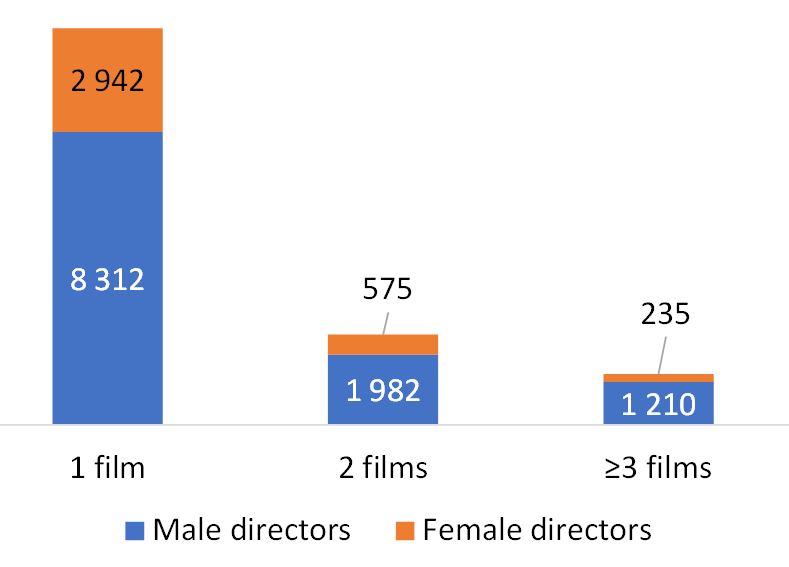
Source: European Audiovisual Observatory / LUMIERE
The study also found out that women tended to work in teams with other colleagues in the same role more frequently than men. Consequently, female professionals were less likely to be the sole professional credited in a given role for a film.
Breakdown of European feature films by gender of screenwriter (2018-2022)
Source: European Audiovisual Observatory / LUMIERE
This can be particularly observed among screenwriters, a role where it is common for several professionals to work in teams. Only 33% of feature films were written by one individual female screenwriter compared to 43 % films by only one male writer. In addition, female professionals were more likely than men to work in gender-mixed teams. Regarding feature films co-written by at least one female screenwriter, 86% were written in collaboration with at least one male colleague.
4. The presence of a women as a film co-director is linked to increased female representation in film crews
Considering off-screen roles, the average female presence per film in each professional category was higher in films co-directed by at least one woman than in films in general. For instance, for films directed by at least one woman, the average share of female screenwriters per film was 77% (compared to 28% for films in general). This figure was 48% when excluding films written and directed by the same person.
Average share of female professionals per film*, by role.
Films by at least one female director vs. All films (2018-2022)
Source: European Audiovisual Observatory / LUMIERE
A positive correlation between the presence of at least one female co-director and an increase in the overall average female share was observed across all film types.
5. Documentary is the film genre with the strongest female presence
Across all crew roles, the average share of female professionals per film was more robust in documentaries that in other film genres. However, when only considering films co-directed by at least one woman, the average female presence per film in film crews was comparatively stable across film genres.
Average share of female professionals per film**, by film genre. All roles combined, excluding directors.
Films by at least one female director vs. All films (2018-2022)
Source: European Audiovisual Observatory / LUMIERE
** Average of the shares of female professionals working in film crews, calculated from the total number of professionals for each feature film in the sample. The female share includes the following off-screen roles: screenwriters, producers, cinematographers, composers and editors, excluding directors. The data sample for this graph only includes films with information on at least one other professional category than directors.
Methodological note
The analysis presented in this report draws on data from the European Audiovisual Observatory’s LUMIERE database, which collates annual admissions to theatrically released films from a variety of sources, including national film agencies. The study sample comprises European feature films produced between 2013 and 2022 and released in European cinemas during the same period. The dataset only includes films for which if was possible to track at least one commercial screening in one of the European markets covered in the LUMIERE database.
The analysis only includes feature-length films, leaving out compilations of short films and event cinema screenings.

